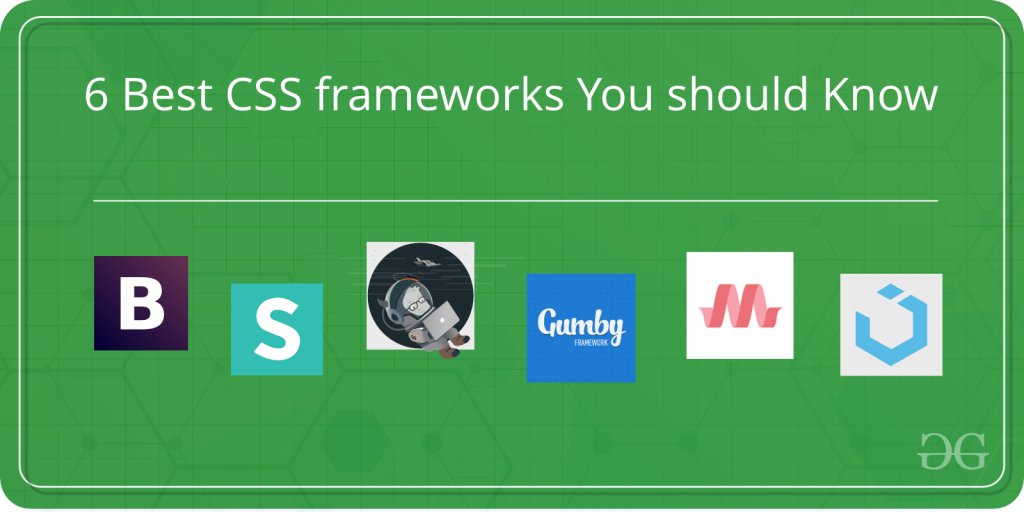6 Best CSS frameworks You should Know to design Attractive Websites
Last Updated :
01 Nov, 2023

If you want to speed up your website and development process, or want to add some classy designs to your website, then you’re at the right place. Awesome new popups, speed, ultimate colors and themes are waiting for you. Front end development is the complete pack of creation and colors and have amazing frameworks. Every framework has its own unique utility.So here are some frameworks used by top companies you should know. So, let’s start with the most used one.
- Twitter Bootstrap: Bootstrap is the most used frontend framework. May be you’re reading this article on phone, tablet or may be on laptop. Think how irritating it will be if you’ve to rotate your mobile or scroll here and there. To see complete interface or to read something. So, here the bootstrap helps to design websites or web apps responsibly. With three different classes for mobile, pads and laptops, all the content of web page gets adjusted according to the screen size of the device on which you open it.
- Semantic UI: Famous for its simple and elegant designs, and unbelievable theme effects. Semantic UI offers 3000+ theme variable, 50+ UI and 5000+ commits. It helps to create beautiful, responsive layouts using HTML. One more interesting thing about it is– you have to develop your UI once. And then you can deploy with the same code everywhere. Semantic comes equipped with an intuitive inheritance system. High level theming variables that let you have complete design freedom. Small file sizes and minimal load times. Because you can load only the components that you need; each has its own JS file and style sheet.
- Foundation: Highly advance responsive frontend framework created by Zurb. Foundation is semantic, readable, flexible, and completely customizable framework. Design to work with any device, medium, and accessibility. Its rich features are also used on sites like Facebook, eBay, and Mozilla. You will have greater flexibility while working with foundation.
- Gumby: Gumby allows to customize and build designs much faster as it wasn’t before. Gumby Framework is a flexible, responsive CSS Framework, Powered by SASS. The Framework comes with 12 grid layout system, that divides the browser’s space into 12 grids and. Gumby supports nested gridding and create rapid and logical page layout. And app prototypes with a flexible and responsive grid system and UI kit. Gumby Framework is available with feature-rich documentation.
- Materialize: A modern responsive frontend framework based on Material Design. Works with refined animations and transitions to provide a smoother experience for developers. User experience focused offers huge selection of components.
- UIKit: UIKit is Lightweight, highly customizable and modular frontend framework. Helps to create advanced user interfaces using components like nestables. UIkit is comprehensive collection of HTML, CSS, and JS-based small, responsive components. This framework uses consistent and conflict-free naming conventions. This makes it simple to use, easy to customize, and scale.
Conclusion
: There are countless other frameworks around the web. Every frameworks is giving its best. Each one has its own different reason for its demand among developers. However, the above ones are the top ones and the most in-demand ones. If you’re a frontend developer or plan to become one in the future, make sure that you know these.
Like Article
Suggest improvement
Share your thoughts in the comments
Please Login to comment...